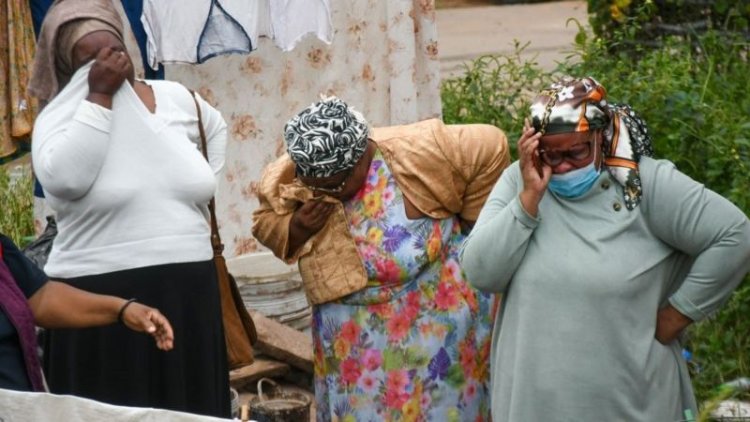South Africans are displaced, injured, and grieved as a result of the Durban floods.
The scale of the damage to infrastructure has been vast with electricity and water supplies hit, although authorities say some of these services have now been restored.

After one of South Africa's deadliest storms slammed the KwaZulu-Natal region, a flood victim told the BBC that she is homeless and hurt.
"We've been traumatized to the point where we can't even eat. I didn't eat for the entire day since I didn't know what to do "According to Boniswa Shangase.
After months of rain fell in just one day in some regions, the region has been declared a disaster.

Over 300 people were killed, but she managed to escape by jumping out of a window.
"I got out of the house through the window, as you can tell from my bruises," the 40-year-old restaurant cashier explained.
She built it 12 years ago and lived there with her two children, but at 10:00 p.m. on Monday everything changed.
Mudslides caused by the excessive rain swept her property downhill in the township of Ntuzuma, in northern Durban.
"Now I'm homeless," she said. "We can't live here anymore," nor can she imagine her life staying in a community hall.
Like most people living in informal settlements, she did not have any insurance.
Ms. Shangase is not the only one still reeling from the impact of these historic floods.
It is thought more than 6,000 homes have been damaged, according to the AFP news agency.
One man nearly broke down as he explained how he managed to make it out alive, but his child did not. Speechless, he dropped his head and struggled to get his words out, against a backdrop of rubble and destroyed properties.
Climate change, according to President Cyril Ramaphosa, who toured impacted areas on Wednesday, is to blame, but some communities disagree. Poor drainage and building standards, they claim, have exacerbated the disaster's scope.
Mxolisi Kaunda, the mayor of Durban, denied that poor drainage was to blame, claiming that the flood's size was unforeseen.

Informal communities, such as those at Ntuzuma, are constructed on a hill with shaky foundations and weak structures.
The scale of the damage to infrastructure has been vast with electricity and water supplies hit, although authorities say some of these services have now been restored.
Rescue missions are being undertaken, with some residents evacuated to places of safety, but large parts of the KwaZulu-Natal province remain submerged including highways and roads, so some communities remain cut off.
The coastal city of Durban is where most of the images of cars submerged in water and flattened properties have come from.
The city has also witnessed several outbreaks of looting, with 12 people arrested on Wednesday night after two retail outlets were targeted, local media report. According to the IOL news site, the suspects took groceries and appliances.
Containers in the dockyards of one of Africa's busiest ports have been completely washed away. The state-owned transport business has announced that shipping will be suspended until further notice, affecting trade across southern Africa.

There have been reports of churches being destroyed, as well as more than 240 schools being damaged around the region.
Even though the floods have subsided and some areas have recovered, more rain is expected during the Easter weekend, and the province remains on high alert.

 Boakyewaa Lawrencia
Boakyewaa Lawrencia 



































